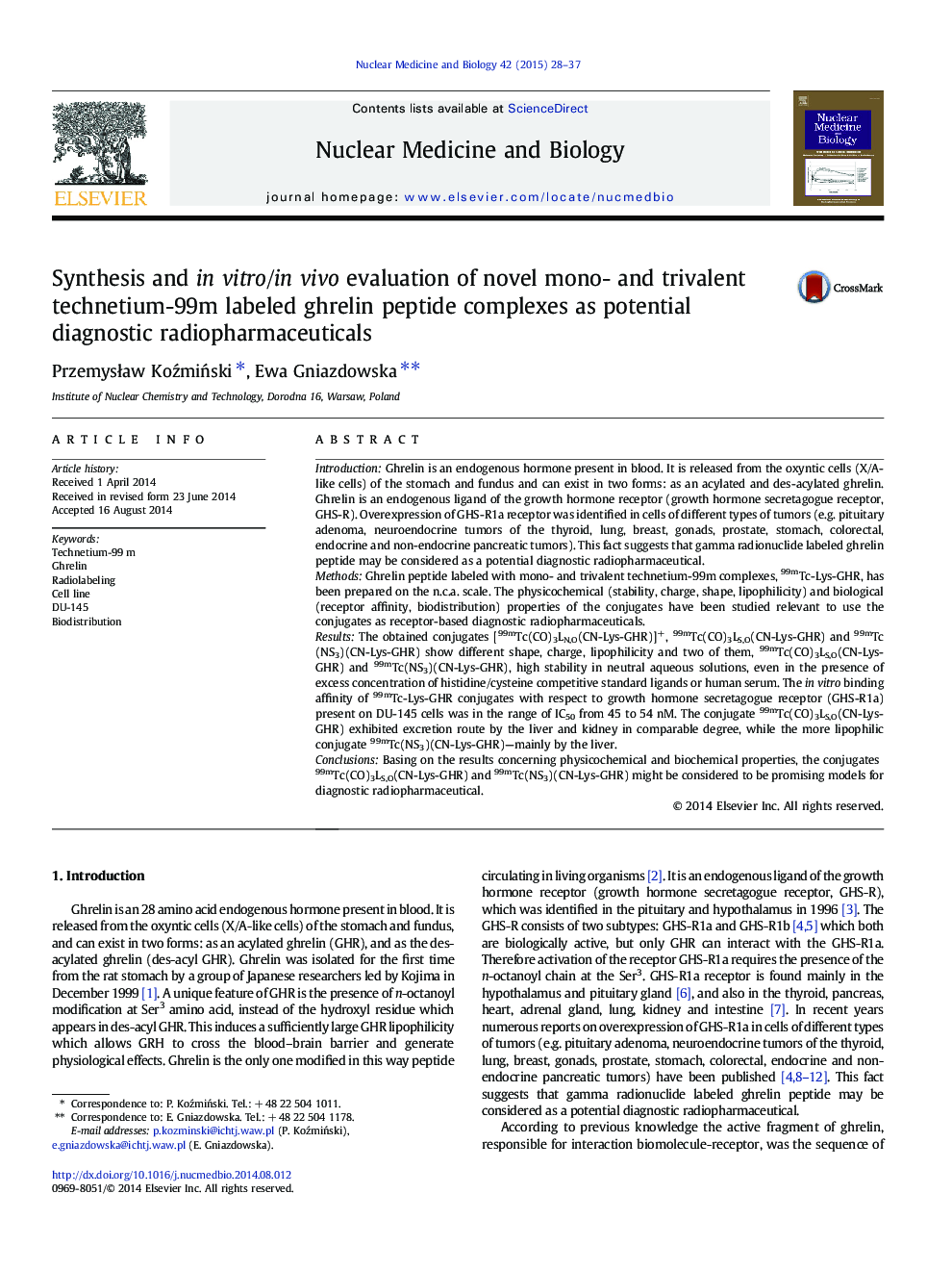| Article ID | Journal | Published Year | Pages | File Type |
|---|---|---|---|---|
| 2153408 | Nuclear Medicine and Biology | 2015 | 10 Pages |
IntroductionGhrelin is an endogenous hormone present in blood. It is released from the oxyntic cells (X/A-like cells) of the stomach and fundus and can exist in two forms: as an acylated and des-acylated ghrelin. Ghrelin is an endogenous ligand of the growth hormone receptor (growth hormone secretagogue receptor, GHS-R). Overexpression of GHS-R1a receptor was identified in cells of different types of tumors (e.g. pituitary adenoma, neuroendocrine tumors of the thyroid, lung, breast, gonads, prostate, stomach, colorectal, endocrine and non-endocrine pancreatic tumors). This fact suggests that gamma radionuclide labeled ghrelin peptide may be considered as a potential diagnostic radiopharmaceutical.MethodsGhrelin peptide labeled with mono- and trivalent technetium-99m complexes, 99mTc-Lys-GHR, has been prepared on the n.c.a. scale. The physicochemical (stability, charge, shape, lipophilicity) and biological (receptor affinity, biodistribution) properties of the conjugates have been studied relevant to use the conjugates as receptor-based diagnostic radiopharmaceuticals.ResultsThe obtained conjugates [99mTc(CO)3LN,O(CN-Lys-GHR)]+, 99mTc(CO)3LS,O(CN-Lys-GHR) and 99mTc(NS3)(CN-Lys-GHR) show different shape, charge, lipophilicity and two of them, 99mTc(CO)3LS,O(CN-Lys-GHR) and 99mTc(NS3)(CN-Lys-GHR), high stability in neutral aqueous solutions, even in the presence of excess concentration of histidine/cysteine competitive standard ligands or human serum. The in vitro binding affinity of 99mTc-Lys-GHR conjugates with respect to growth hormone secretagogue receptor (GHS-R1a) present on DU-145 cells was in the range of IC50 from 45 to 54 nM. The conjugate 99mTc(CO)3LS,O(CN-Lys-GHR) exhibited excretion route by the liver and kidney in comparable degree, while the more lipophilic conjugate 99mTc(NS3)(CN-Lys-GHR)—mainly by the liver.ConclusionsBasing on the results concerning physicochemical and biochemical properties, the conjugates 99mTc(CO)3LS,O(CN-Lys-GHR) and 99mTc(NS3)(CN-Lys-GHR) might be considered to be promising models for diagnostic radiopharmaceutical.
